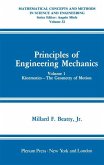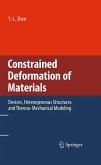This is an extensively revised second edition of "Interfacial Transport Phenomena", a unique presentation of transport phenomena or continuum mechanics focused on momentum, energy, and mass transfer at interfaces. In addition to tightening the focus of the book there are two important additions: an extended discussion of transport phenomena at common lines or three-phase lines of contact, as well as a new theory for the extension of continuum mechanics to the nanoscale region immediately adjacent to the interface. Applications of this theory are also clarified and discussed.
This book is written for the advanced student of transport phenomena. The emphasis is upon achieving an in-depth understanding based upon first principles. It is designed to prepare the reader for active research. It includes exercises and answers, and can serve as a graduate level textbook.
Transport phenomena is used here to describe momentuin, energy, mass, and entropy transfer [1, 2]. It includes thermodynamics, a special case of which is thermosiaiics. Interfacial transport phenomena refers to momentum, energy, mass, and entropy transfer within the immediate neighborhood of a phase interface, including the thermodynamics of the interface. In terms of qualitative physical observations, this is a very old field. Pliny the Elder (Gains Plinius Secundus, 23-79 A. D. ; Pliny [3]) described divers who released small quantities of oil from their mouths, in order to damp capillary ripples on the ocean surface and in this way provide more uniform lighting for their work. Similar stories were retold by Benjamin Franklin, who conducted experiments of his own in England [4]. In terms of analysis, this is a generally young field. Surface thermostat ics developed relatively early, starting with Gibbs [5] and continuing with important contributions by many others (see Chap. 4). Derjaguin and Lan dau [6] and Verwey and Overbeek [7] indicated how London-van der Waals and electrostatic double-layer forces were to be incorporated in continuum mechanics, now often referred to as DLVO theory. But prior to 1960, there were relatively few notable papers concerned with the analysis of dynamic systems. Two stand out in my mind. Boussinesq [8] recognized the surface stress tensor and proposed the constitutive equation that we now refer to as the Boussinesq surface fluid model (Sect. 4. 9. 5).
Hinweis: Dieser Artikel kann nur an eine deutsche Lieferadresse ausgeliefert werden.
This book is written for the advanced student of transport phenomena. The emphasis is upon achieving an in-depth understanding based upon first principles. It is designed to prepare the reader for active research. It includes exercises and answers, and can serve as a graduate level textbook.
Transport phenomena is used here to describe momentuin, energy, mass, and entropy transfer [1, 2]. It includes thermodynamics, a special case of which is thermosiaiics. Interfacial transport phenomena refers to momentum, energy, mass, and entropy transfer within the immediate neighborhood of a phase interface, including the thermodynamics of the interface. In terms of qualitative physical observations, this is a very old field. Pliny the Elder (Gains Plinius Secundus, 23-79 A. D. ; Pliny [3]) described divers who released small quantities of oil from their mouths, in order to damp capillary ripples on the ocean surface and in this way provide more uniform lighting for their work. Similar stories were retold by Benjamin Franklin, who conducted experiments of his own in England [4]. In terms of analysis, this is a generally young field. Surface thermostat ics developed relatively early, starting with Gibbs [5] and continuing with important contributions by many others (see Chap. 4). Derjaguin and Lan dau [6] and Verwey and Overbeek [7] indicated how London-van der Waals and electrostatic double-layer forces were to be incorporated in continuum mechanics, now often referred to as DLVO theory. But prior to 1960, there were relatively few notable papers concerned with the analysis of dynamic systems. Two stand out in my mind. Boussinesq [8] recognized the surface stress tensor and proposed the constitutive equation that we now refer to as the Boussinesq surface fluid model (Sect. 4. 9. 5).
Hinweis: Dieser Artikel kann nur an eine deutsche Lieferadresse ausgeliefert werden.
From the reviews of the second edition:
"This book provides a solid fundamental and comprehensive presentation of the transport phenomena, pointing out the most important practical applications of the problems described. ... is very well written and readable. Results of the exercises are given graphically and in tabular form. The book will be of interest and useful to a wide range of specialists working in the area of transport phenomena, and to advanced students of transport phenomena. ... recommended as a text for seminars and courses, as well as for independent study." (Ioan Pop, Zentralblatt MATH, Vol. 1116 (18), 2007)
"This book provides a solid fundamental and comprehensive presentation of the transport phenomena, pointing out the most important practical applications of the problems described. ... is very well written and readable. Results of the exercises are given graphically and in tabular form. The book will be of interest and useful to a wide range of specialists working in the area of transport phenomena, and to advanced students of transport phenomena. ... recommended as a text for seminars and courses, as well as for independent study." (Ioan Pop, Zentralblatt MATH, Vol. 1116 (18), 2007)








